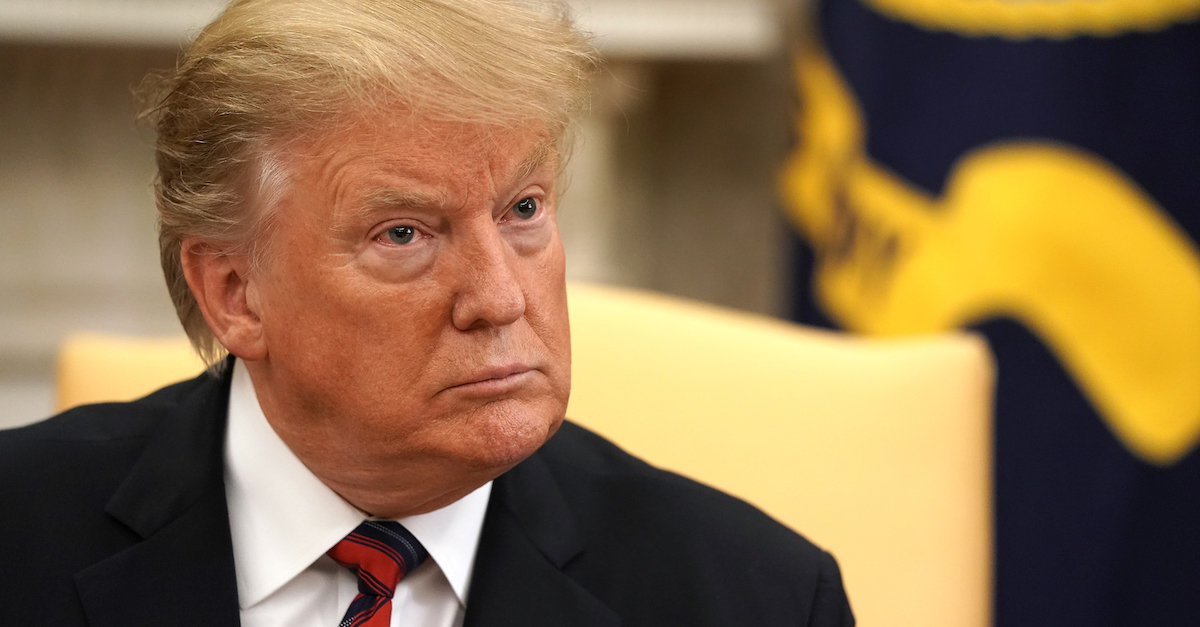
A federal court in Texas on Friday ruled the Trump administration’s controversial attempt to divert military funds in order to construct a wall along the U.S.-Mexico border is unlawful because President Donald Trump‘s national emergency declaration violates a federal budgeting provision the 45th president personally signed into law.
The 33-page opinion issued by the U.S. District Court for the Western District of Texas deals the Trump administration a severe legal blow by dismissing several government arguments in a summary judgment for El Paso County and the Border Network for Human Rights.
The basis of U.S. District Judge David Briones‘ opinion is largely confined to the Consolidated Appropriations Act (CAA) of 2019–which President Trump signed into law on February 15 of this year.
One month prior, in January 2019, Trump issued a formal White House budget request asking for $5.7 billion during 2019 “for construction of a steel barrier for the Southwest border.” That request was denied.
After being shut down by Congress, and also on February 15, Trump issued his controversial national emergency proclamation and a complementary plan which purported to divert “funds that Congress appropriated for other purposes to build a border wall.”
The would-be diverted funds at issue are $2.5 billion worth of Department of Defense (DOD) funds appropriated for Counterdrug Activities under § 284 of the National Emergency Act (NEA) and $3.6 billion worth of DOD funds appropriated for “military construction projects” under § 2808 of the Military Construction Act (MCA).
The Trump administration’s overarching legal argument was that the NEA and MCA essentially “appropriated funds for similar purposes” to the president’s oft-promised and never-delivered border wall.
Judge Briones rejected that argument–noting that “a more specific statute will be given precedence over a more general one.”
The specific statute controlling the appropriation of funds to be used along the U.S.-Mexico border is the CAA and said statute “specifically appropriates $1.375 billion for border-wall expenditures and requires those expenditures to be made on ‘construction…in the Rio Grande Valley Sector’ alone,” the court notes.
Government attorneys argued that the appropriations provisions contained in the CAA “arguably” conflicted with other legislation–like the NEA and MCA. That argument didn’t go over so well either.
Again the court: “However, the CAA does not conflict with any underlying authorizing legislation, rather the Proclamation’s use of other legislation to commit additional funds to border barrier construction conflicts with the CAA.”
Section 739 of the CAA is also cited at length:
None of the funds made available in this or any other appropriations Act may be used to increase, eliminate, or reduce funding for a program, project, or activity as proposed in the President’s budget request for a fiscal year until such proposed change is subsequently enacted in an appropriation Act, or unless such change is made pursuant to the reprogramming or transfer provisions of this or any other appropriations Act.
The emergency declaration’s plan to divert military funds runs afoul of § 739 “because the plan is barred by that provision’s general rule and the plan does not fall within its exception,” the court explains.
That general rule is activated because Trump is attempting to use funds already “made available” in an “appropriations Act” in order “to increase funding for a program, project, or activity” that was already “proposed in the President’s budget request for a fiscal year.”
Judge Briones was also asked to address various constitutional issues by both parties–but declined to do so because the basic thrust of the case is controlled by the CAA’s general and specific provisions.
“Because this disposes of the case, the Court will not address the other merits arguments raised, including the constitutionality of the Proclamation and the NEA, nor the Appropriations Clause and Administrative Procedures Act claims,” Briones noted.
In other words: Trump signed an appropriations bill into law which expressly forbade the diversion of funds appropriated by Congress for non-enumerated projects. Trump then tried to divert appropriated funds by way of a national emergency declaration and the court decided this was invalid based on that narrow issue alone–despite the administration’s efforts to bar the court from reviewing the NEA.
Here, the court was more than happy to oblige.
[Image via Chip Somodevilla/Getty Images]